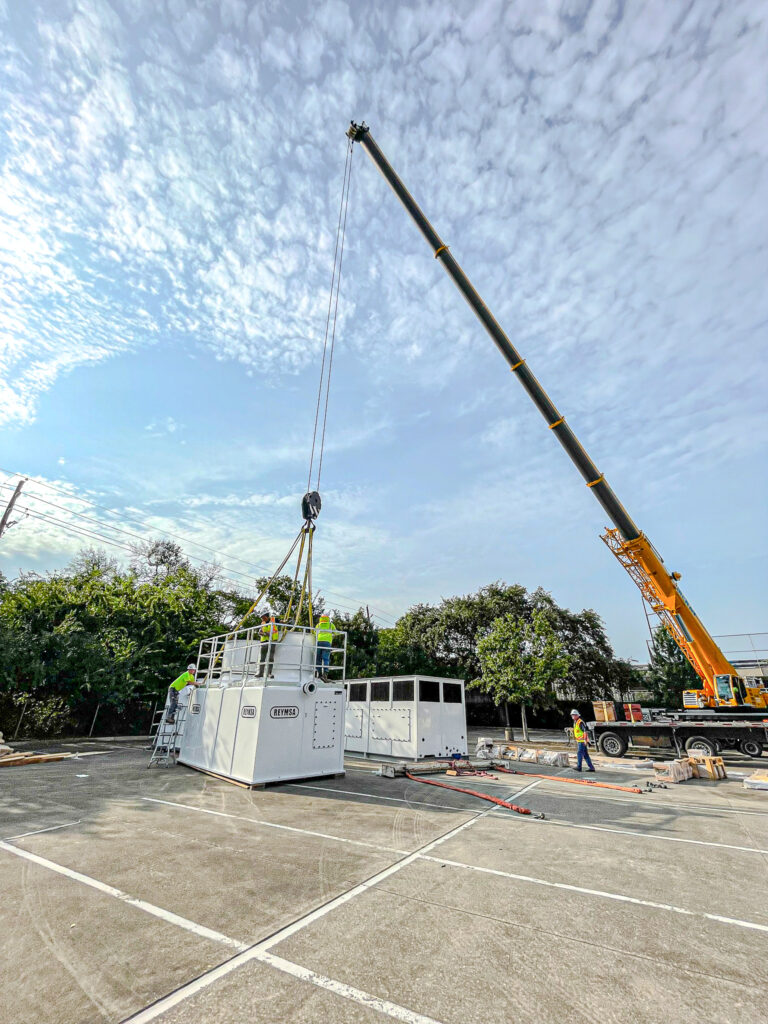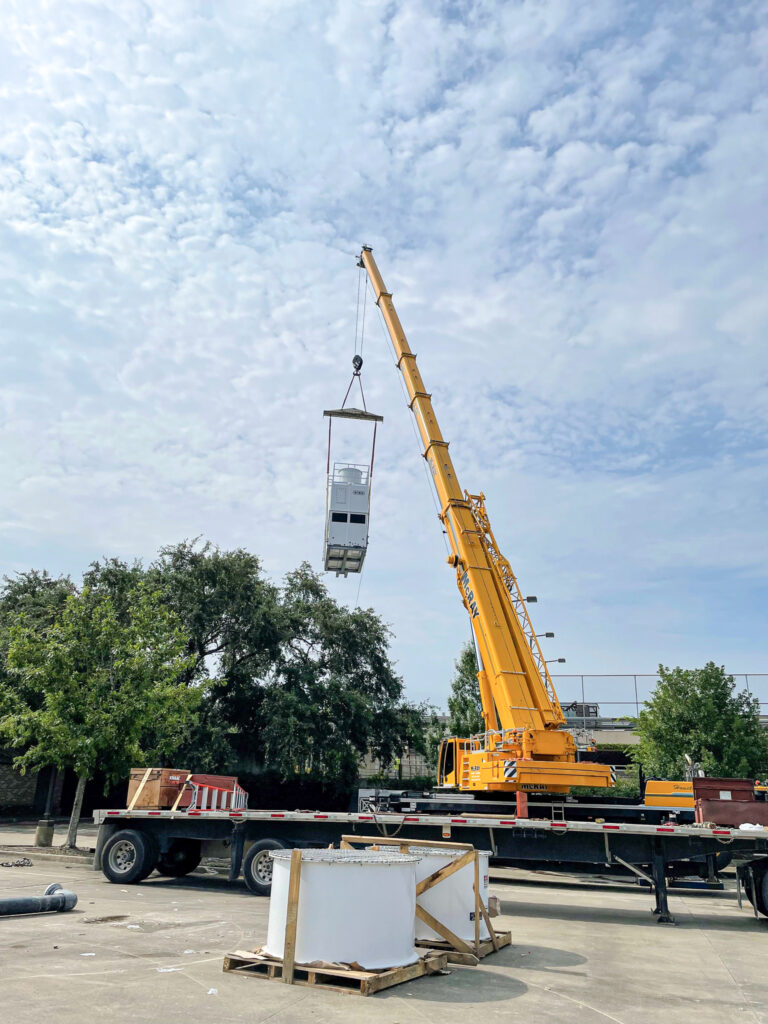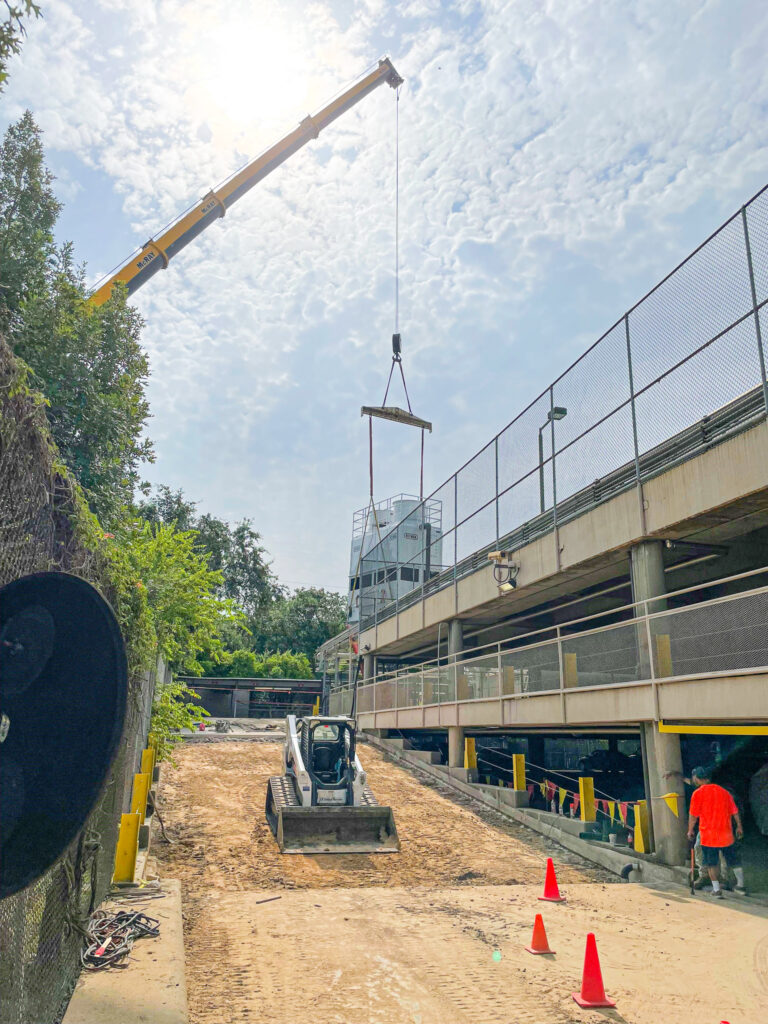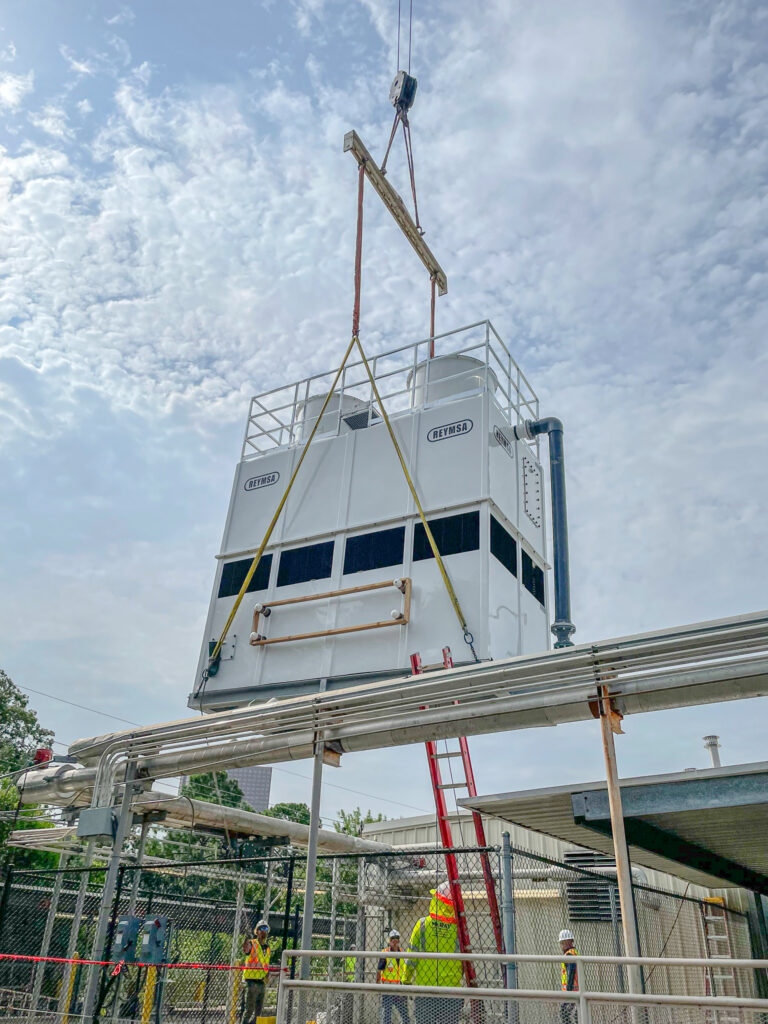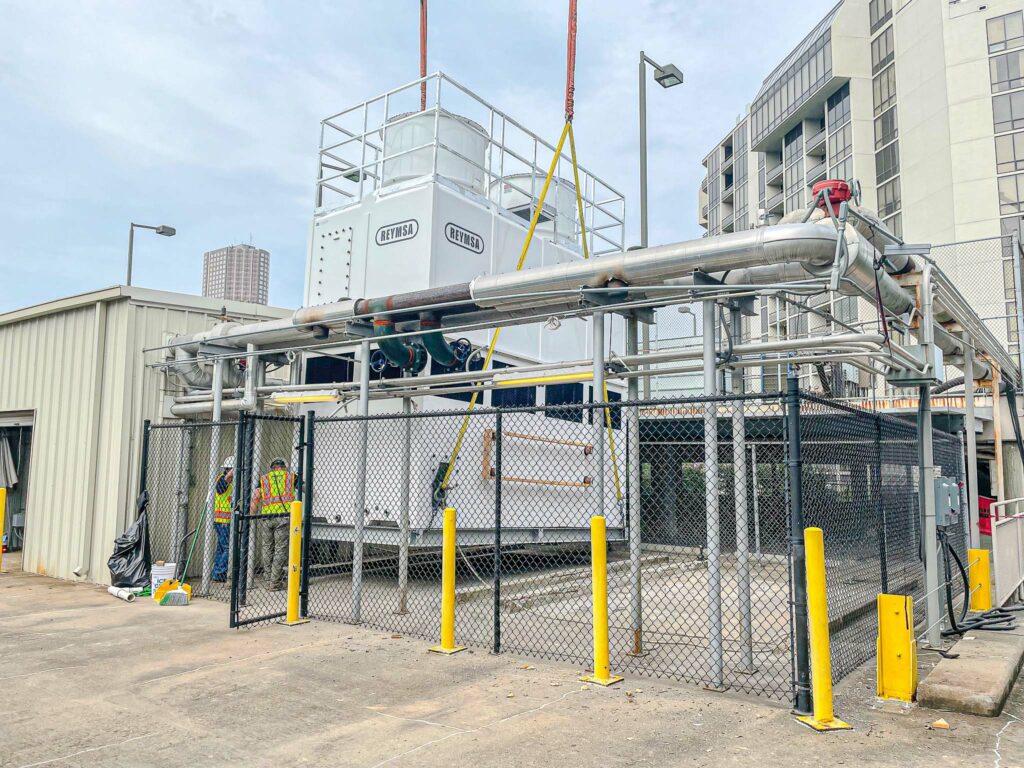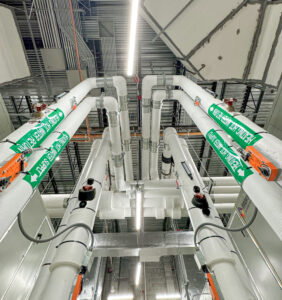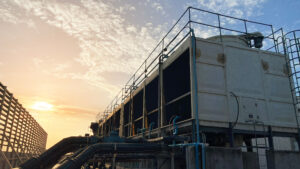Inside an Emergency Mechanical Repair: Rapid Response & Restoration
Kilgore Industries, a trusted mechanical contractor in Houston, TX, has a proven track record of handling emergency HVAC repairs following severe natural disasters.
In February of 2021, a Houston 14-story condominium high-rise experienced HVAC failure due to the record-breaking winter storm that caused massive power outages across Texas. Kilgore Industries, a leader in commercial mechanical services received the emergency request for service and quickly began to inspect the HVAC system. Meanwhile, the service crew promptly employed one of the last available 3-million BTU temporary cooling units in Texas, which brought instant relief to the high-rise residents just as power was gradually restored in the Houston area.
After assessing the overall damage, it was determined that the system suffered a complete failure of the two cooling towers. The damaged cooling towers utilized internal coils where water travels in what is commonly known as a close loop system. As the temperature reached below freezing, the coils inside the towers began to burst. The damage assessment report indicated that the lead cooling tower had 42 busted tubes and 33 on the lag unit.
Kilgore Service presented a few cost-effective options; the customer opted to upgrade to new cooling towers and replace the existing components. Upgrading an HVAC system with modern components may result in several advantages: improve efficiency, minimize waste footprint, improve controllability, reduce maintenance expense, and brings the system up to date with the latest codes.
Cooling Tower Failure: Causes, Solutions, and Upgrades After Extreme Weather
Due to the catastrophic event, the demand for new cooling towers grew exponentially. It was reported that 220+ cooling towers experienced failure in the Houston area. The Kilgore service division rapidly secured two new cooling towers within days. Meanwhile, the demolition phase began by removing the aging water and electrical lines, including electrical and automation control panels. The two damaged cooling towers were decommissioned and removed via a crane.
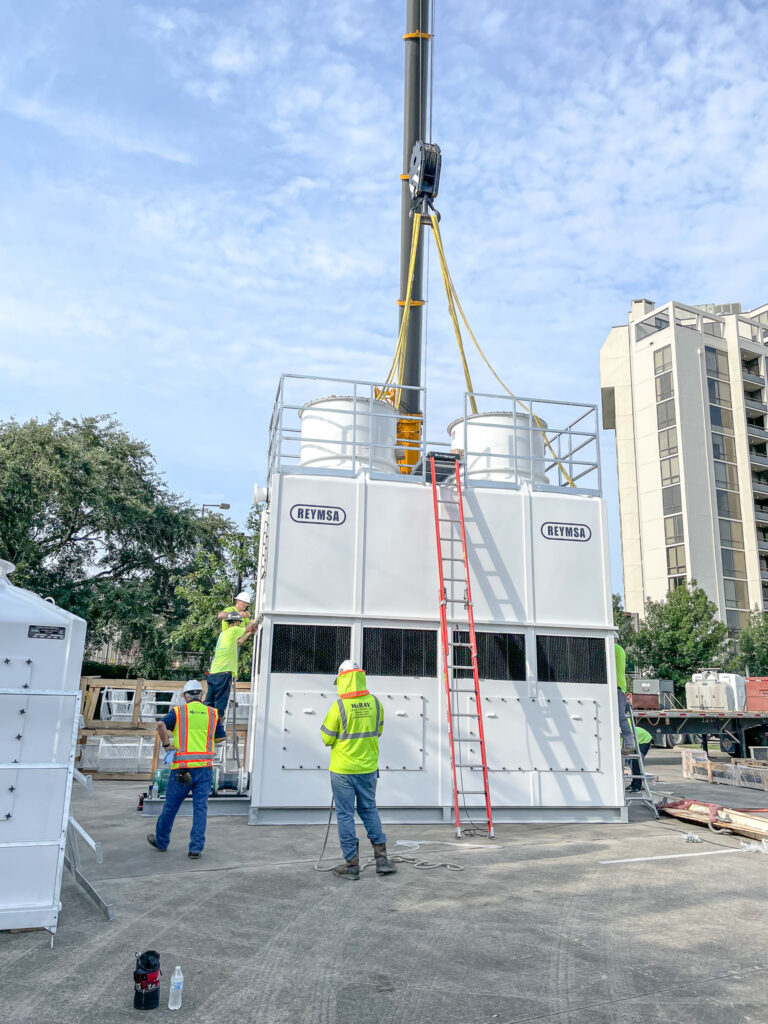
Once the new cooling towers were delivered to the project site, the crew began re-piping 2-to-8-inch waterlines, connected the electrical lines, and installed the new control panels. A building automation system (BAS) was wired, connected, and programmed. The Kilgore crew began conducting testing to identify any potential leaks. Once cleared, the crew started reinsulating the pipes. A startup on the system was performed, followed by a few calibration commands that allowed the system to function as intended.
HVAC Restoration & Insurance Assistance: Navigating Claims After a Disaster
In addition to restoring the entire HVAC system, Kilgore Service worked hand-in-hand with the customer to ensure all the necessary documents and reports were properly filed to the insurance company. Settling claims after a natural disaster can be a daunting task. Having a company that understands the legalities and requirements of insurance companies while having an experienced service crew managing the project can save you time and money.
